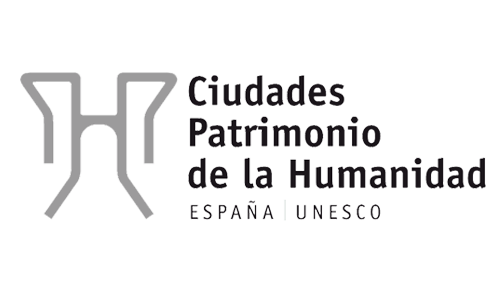Alcazaba (Arab Citadel)








This great fortress was built in the Muslim Mérida by Umayyad Emir Abd ar-Rahman II in 835 AD. In charge of laying it out was the architect Abd Allah. To build this Alcazaba, the oldest of the Peninsula, inspiration was drawn from Byzantine models. The purpose of this fortified palace was multiple in nature: to serve as a headquarters for Umayyad administrative offices and as a residence for the local governor. However, above all, it was used to filter access to the city from the Roman bridge, the shelter of the Arab minority during the repeated local revolts against Cordovan power, and the square where troops belonging to the Emir were stationed – either to quell the revolt of the meridíes Mozarabs or to carry out bullying raids in the Christian kingdoms of the North.
The entire perimeter of this extensive Alcazaba was surrounded by a large moat, except the side that overlooks the Guadiana River. A total of 25 solid towers are distributed at specific distances, part of the wall itself. The Albarrana towers, that is to say, those which stand separate from the main body of the fortress, were constructed at a later date by the Order of Santiago.
This construction’s walls, measuring 2.70 meters in width, are faced with ashlar masonry and other repurposed materials from previous eras. The core of these walls is made of gravel, soil, and pieces of granite.
Access to the complex is through a gap that formerly housed a section of wall with an access door, flanked by towers on either side. This was the entryway to a square stronghold whose eastern side gave access to the city and whose southern side provided access to the Alcazaba. On the access door, a replica of a Kufic inscription can be seen, making note of the date construction was finished.
In the courtyard of this stronghold, one can find archaeological remains from Roman times: the main road of the city as well as the foundations of the wall and of a monumental gate with two openings and two towers. By the way, said gate has been, for centuries, the symbol of this city because of its representation on some of the currency issued in Emerita Augusta.
On the inside, noteworthy is the presence of a cistern for water storage, the only of its kind in the Peninsula's archeology, having been built with Roman and Visigoth decorative architectural pieces. A mosque was located on the floor above the cistern. It was subsequently converted into a church and its basic structure remains today. What was once the third floor, where perhaps a signal tower was located, does not remain today.
Other excavated areas of this fortress house remains that are prior to its construction: a perfectly-conserved stretch of Roman road – the same which continues in the Morerías Archaeological Area. An urban Roman dwelling which has seen multiple reforms faces the aforementioned street. Finally, a section of the Roman wall can be seen, next to which, as in the case of the Morerías Archaeological Area, stands a powerful buttress made of pieces of re-used granite – a buttress which seems to be from the fifth century AD.








This great fortress was built in the Muslim Mérida by Umayyad Emir Abd ar-Rahman II in 835 AD. In charge of laying it out was the architect Abd Allah. To build this Alcazaba, the oldest of the Peninsula, inspiration was drawn from Byzantine models. The purpose of this fortified palace was multiple in nature: to serve as a headquarters for Umayyad administrative offices and as a residence for the local governor. However, above all, it was used to filter access to the city from the Roman bridge, the shelter of the Arab minority during the repeated local revolts against Cordovan power, and the square where troops belonging to the Emir were stationed – either to quell the revolt of the meridíes Mozarabs or to carry out bullying raids in the Christian kingdoms of the North.
The entire perimeter of this extensive Alcazaba was surrounded by a large moat, except the side that overlooks the Guadiana River. A total of 25 solid towers are distributed at specific distances, part of the wall itself. The Albarrana towers, that is to say, those which stand separate from the main body of the fortress, were constructed at a later date by the Order of Santiago.
This construction’s walls, measuring 2.70 meters in width, are faced with ashlar masonry and other repurposed materials from previous eras. The core of these walls is made of gravel, soil, and pieces of granite.
Access to the complex is through a gap that formerly housed a section of wall with an access door, flanked by towers on either side. This was the entryway to a square stronghold whose eastern side gave access to the city and whose southern side provided access to the Alcazaba. On the access door, a replica of a Kufic inscription can be seen, making note of the date construction was finished.
In the courtyard of this stronghold, one can find archaeological remains from Roman times: the main road of the city as well as the foundations of the wall and of a monumental gate with two openings and two towers. By the way, said gate has been, for centuries, the symbol of this city because of its representation on some of the currency issued in Emerita Augusta.
On the inside, noteworthy is the presence of a cistern for water storage, the only of its kind in the Peninsula's archeology, having been built with Roman and Visigoth decorative architectural pieces. A mosque was located on the floor above the cistern. It was subsequently converted into a church and its basic structure remains today. What was once the third floor, where perhaps a signal tower was located, does not remain today.
Other excavated areas of this fortress house remains that are prior to its construction: a perfectly-conserved stretch of Roman road – the same which continues in the Morerías Archaeological Area. An urban Roman dwelling which has seen multiple reforms faces the aforementioned street. Finally, a section of the Roman wall can be seen, next to which, as in the case of the Morerías Archaeological Area, stands a powerful buttress made of pieces of re-used granite – a buttress which seems to be from the fifth century AD.
Hours
Fees
Location





